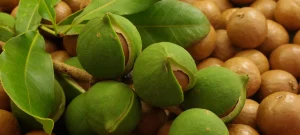
Amaranth (terere) is rapidly gaining importance in Kenya as a source of nutrition and income. However, its productivity is often threatened by various diseases—including fungal, bacterial, and nematode infections—that can significantly reduce yields if not adequately addressed.
To maximize your harvest, adopting proactive crop management strategies is crucial. These include early disease detection, maintaining field hygiene, and improving soil health. Incorporating products such as Safi Biochar and Safi Topper can significantly enhance the soil’s ability to suppress pathogens and support vigorous plant growth.
For a step-by-step guide on growing and managing amaranth successfully, read our full article on Amaranth Farming in Kenya.
1. Damping-Off Disease
Damping-off is a common seedling disease in amaranth, primarily caused by soilborne fungi such as Pythium and Rhizoctonia. It typically affects young plants in their early stages, leading to sudden and severe losses in the nursery.
Symptoms include the collapse of seedlings at the soil line and the development of soft, water-soaked lesions at the stem base. Affected seedlings often wilt and die quickly, creating bare patches in nursery beds.
Control measures focus on maintaining proper soil hygiene and moisture levels. Farmers should use well-drained and sterilized nursery beds to prevent fungal buildup. Incorporating Safi Biochar into the nursery soil can help suppress harmful fungal pathogens by improving soil structure and microbial balance.
Additionally, avoiding overwatering and using soil solarization before planting can significantly reduce the risk of damping-off outbreaks.
2. Downy Mildew
Downy mildew is a severe foliar disease caused by Peronospora species. It thrives in cool and humid environments and spreads quickly in amaranth fields. The disease reduces the quality and quantity of leaves, affecting market value.
Symptoms appear first as pale or yellow patches on the upper sides of leaves—a gray or purplish mold forms on the undersides. Infected leaves curl and drop, leading to weak and stunted plants.
Control measures include improving air circulation by spacing plants well. Remove infected leaves immediately to slow the spread. Rotate crops to disrupt the disease cycle. Use Safi Topper to boost plant resistance and support healthy, vigorous growth.
3. Leaf Spot (Cercospora Leaf Spot)
Leaf spot is caused by fungi in the Cercospora group. It is common in warm, moist conditions and spreads quickly through infected debris. If ignored, it can lead to significant leaf loss and lower yields.
Symptoms include small, round, dark spots on the leaves. These lesions grow larger over time. Infected leaves turn yellow and drop early, reducing the plant’s ability to produce food.
Control measures start with removing infected leaves to stop the spread. Avoid overhead watering, which creates the damp conditions fungi love. Rotate crops every season. Applying Safi Biochar helps the soil grow good microbes that fight fungal infections naturally.
4. Root-Knot Nematodes
Root-knot nematodes are tiny roundworms from the Meloidogyne group. They live in the soil and attack plant roots. Once inside, they cause severe damage that weakens the plant.
Symptoms include knotted, swollen roots that can’t take up water or nutrients well. Above ground, plants look stunted, turn yellow, and wilt even when watered. Infected crops often give poor yields.
Control measures include rotating amaranth with cereals like maize, which nematodes don’t like. Solarize nursery beds before planting to kill pests in the soil. Adding Safi Biochar helps suppress nematodes and improves soil health for better plant growth.
5. White Rust
White rust is caused by Albugo candida, an organism that spreads through wind and water. It mainly attacks the leaves, making them unfit for sale or consumption. The disease spreads fast in moist and crowded fields.
Symptoms include white, blister-like spots on the undersides of leaves. These may burst and release spores. Infected leaves often become twisted or deformed, slowing plant growth and reducing quality.
Control measures include removing and destroying all infected plants right away. Avoid planting crops too close together, and don’t use overhead irrigation. Apply Safi Topper to boost plant immunity and support healthy growth that can resist infections.
Why Soil Health Matters in Disease Prevention
Healthy soil is your first defense against plant disease. It helps lower harmful pathogens and boosts natural plant resistance. Plants grow stronger and recover faster from infections when the soil is rich and balanced.
Safi Biochar plays a key role in building this kind of soil. It increases good microbes that fight disease-causing organisms. It also improves how the soil holds moisture and nutrients, giving roots a better environment to thrive.
Safi Topper adds the nutrients plants need to grow strong. It supports healthy leaf and root development and strengthens plant immunity. This makes crops like amaranth less likely to suffer from fungal and bacterial attacks.
Want to dive deeper? Learn more about the importance of soil health in sustainable farming.
Further Reading
Check out the University of California’s Integrated Pest Management guide for more scientific insights into amaranth diseases and how to manage them. It offers research-based tips helpful for both small- and large-scale farmers.
Conclusion
Amaranth farmers in Kenya must stay alert to diseases like damping-off, downy mildew, and leaf spots. These problems can spread fast and cause considerable losses if ignored.
Using an integrated approach is key. Combine good field hygiene, crop rotation, and healthy soil practices. Adding Safi Biochar and Safi Topper helps build vigorous plants that resist infections naturally.



